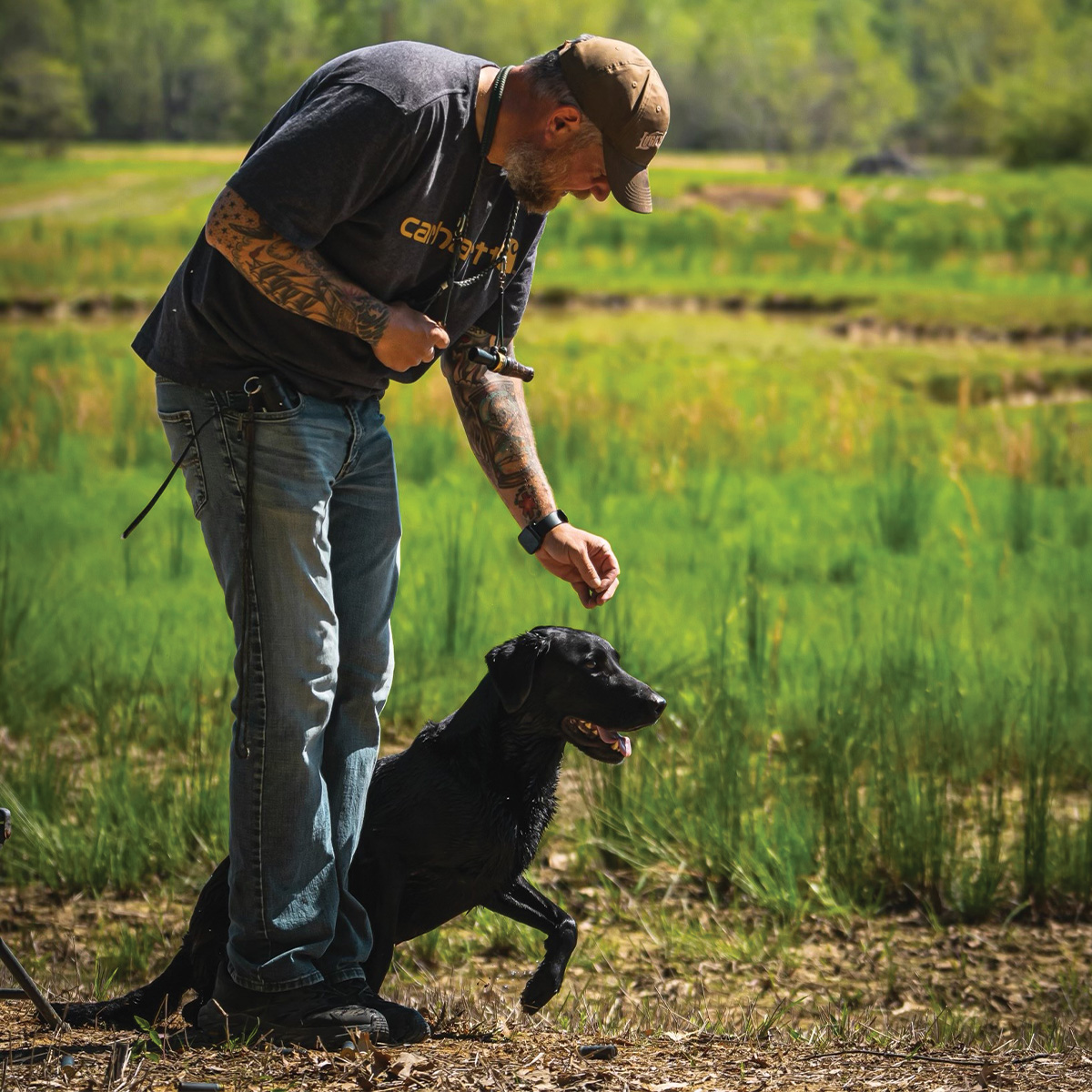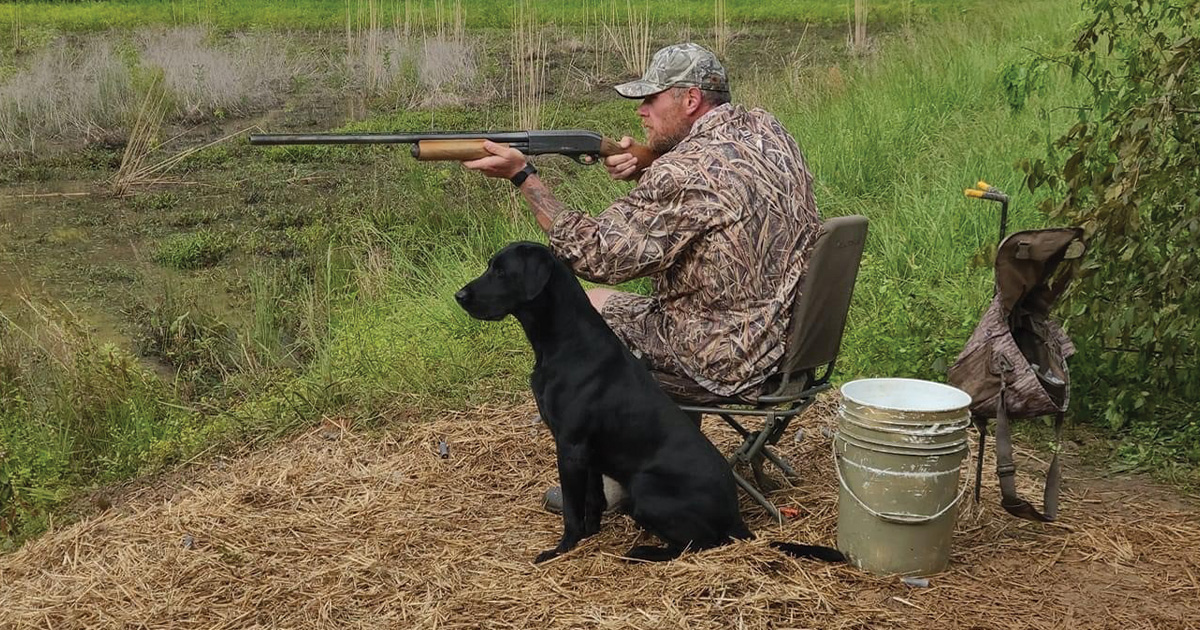Meet the Trainers: Q&A with Veteran Dog Trainer Jon Schuetz
Elevate your retriever training skills with insights from Jon Schuetz of Continental Kennels
Elevate your retriever training skills with insights from Jon Schuetz of Continental Kennels


Meet veteran retriever trainer Jon Schuetz of Continental Kennels.
Location: Cabot, Arkansas
How long have you been a trainer? 11 years
Until the pup is six months old, the top priority is to socialize the dog. Take pup everywhere you can. If you’re going to Tractor Supply, Home Depot, Cabela’s, or any place like that, take your pup. If you’re just going for a truck ride around town, take your pup. If you’re going to the ballfield to watch your kid’s baseball game, take your pup. Exposing your pup early to new sights, sounds, smells, and people will help them adapt to different situations when they’re older. During this time, you should also be building retrieving desire. Throw your pup a couple retrieves every 3 to 4 days. Keep it fun for your pup, something he looks forward to, and leave them wanting more. Once your pup turns 6 months old, start formal training. Obedience is key for all future training and hunting. A dog that sits obediently, doesn’t break or make a bunch of noise, and listens to commands is a pleasure to be around in the blind and will get you invited back to future hunts; that all starts in obedience.
The biggest mistake I see amateur trainers make is trying to rush the training. They think they need to follow a timeline they found online. Forget the timeline and move at your dogs pace. Only move on to the next step when your dog has mastered the current step.
Another big mistake I see inexperienced trainers make is listening to too many people. Every trainer and every training program is a little different, they might end up at the same place, but they take slightly different paths to get there. When you start mixing training programs or listening to too many people, you can miss steps. My advice if you’re going to train your dog yourself, find a training program you like and follow that one program. Ask for help or advice when you’re stuck on something or struggling, but stick to the program your on.
I’m not sure how many dogs named, Diesel, Drake, Remi, or Belle, I’ve trained over the years, but I can tell you how many I’ve trained named Tater, Fitch, and Mara, I’ve had.
We mostly hunt flooded timber and sometimes we don’t have the option to stand right beside our dog, they might be on a stand 20 yards away from us. When we drop a duck and someone hollers “Diesel” there’s a chance 2 to 3 dogs could go for that bird. That could easily end up in a dog fight.

Introductions vary widely based on the dog. What some dogs struggle with, other dogs breeze though. Dogs that are properly socialized as puppies tend to do better with new introductions in training. That’s why socialization is such a huge thing when they’re young. The key to new concept introduction is to be able to read the dog. If the dog is having a difficult time, we need to be able to back up a step, simplify things, break it down so the dog will have success.
The simplest way to correct breaking is to not let it start. When you’re teaching basic obedience, dogs need to learn and understand that “sit” means, “sit, until I tell you to do something else.”
If the pup moves when you throw a bird or bumper in training, don’t let them get the retrieve. Have them sit where you originally told them to sit, then make them watch as you walk out and pick up the bird or bumper. They need to understand that they will get what they want, the retrieve, after you get what you want, them to sit and wait.
At some point, all dogs, no matter how well trained, will break on a bird. The e-collar correction needs to be made immediately, before the dog gets to the bird. Don’t let them get the reward. In training, I will turn up the collar slightly higher than normal and apply pressure until the dog returns to me.
I will usually grab the dog by the muzzle, tell them “no, quiet,” and give a little pop on the chin. If the whining or excessive barking continues, I will get a little more assertive with the pop on the chin. Eventually, “quiet” will become a command to the pup to stop.
My general rule is once it hits about 90 degrees, it’s time to shut down running marks and blinds for the day. Time management becomes key to training. I get out early, get everything set up before the sun rises, so I can start running dogs at first light.
The most important thing anyone can do is watch their dogs for signs of distress or overheating. Excessive panting, labored breathing, and disorientation are a first signs to look for.
When I’m out training in the summer, I keep fans running in the trailer to help move cool air around. I make sure to have plenty of drinking water available for the dogs at all times and will throw in a couple ice cubes. After a dog has finished training, I’ll tie it out in the shade to cool off a little bit before going back on the trailer or in a kennel.

Before a dog goes out for his first hunt, he needs to be solid on the basics. A dog that breaks is not only an annoyance, there’s also a safety concern for the dog. I recommend taking a lead or a rope on the hunt. If you see that your dog is breaking on moving around a lot, tie him out so he can’t break.
I also want a dog that is comfortable and confident taking hand signals and running blinds.
The two most common bad habits I see dogs develop during hunting season are breaking and getting too independent on blind retrieves. Breaking is a safety issue for the dog and will interfere with the hunt. This needs to be addressed immediately. Typically, if a dog is going to break, it’s going to be early in the season and early in the hunt. I recommend for the first couple of hunts during the year to keep your hunting group small, just a couple of people. Your job as a handler is to work with your dog, don’t worry about calling or shooting; make sure your dog is doing the right things. If your dog breaks, correct him before he picks up the bird. Call him back and make him sit, let someone else or another dog pick up the bird. If the breaking continues to be an issue, tie him up so he can’t break.
Everyone wants to get ducks picked up as quickly as possible so we can reset and get ready for the next group of birds. The tendency on blind retrieves it to get dogs close to the area and let them hunt until they find the bird, afterall, that’s why God gave them such great noses. This leads to dogs thinking they don’t have to take directions from the handler or work as a team. My advice is to take your time, don’t be in a rush. Make your dog listen to you and respond correctly to every command you give. Yes, you might flare a group of ducks, but in the long run your dog will be much better at his job.
I expect my retrievers to be a well-behaved, contributing members of the hunting group. I expect them to sit quietly and patiently for a few ducks to get cut, go pick up the ducks, and bring them back to me. Once we get home, I expect them to be curled up on the couch beside me dreaming about tomorrows hunt.
Ducks Unlimited uses cookies to enhance your browsing experience, optimize site functionality, analyze traffic, and deliver personalized advertising through third parties. By continuing to use this site, you agree to our use of cookies. View Privacy Policy